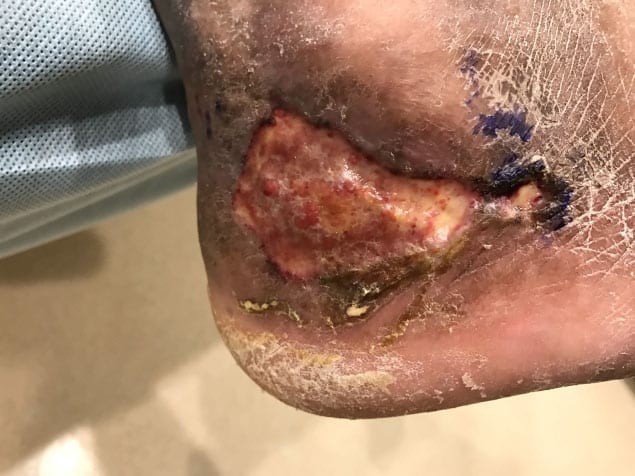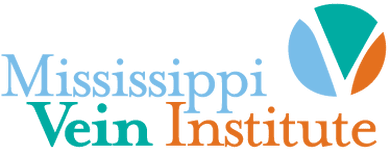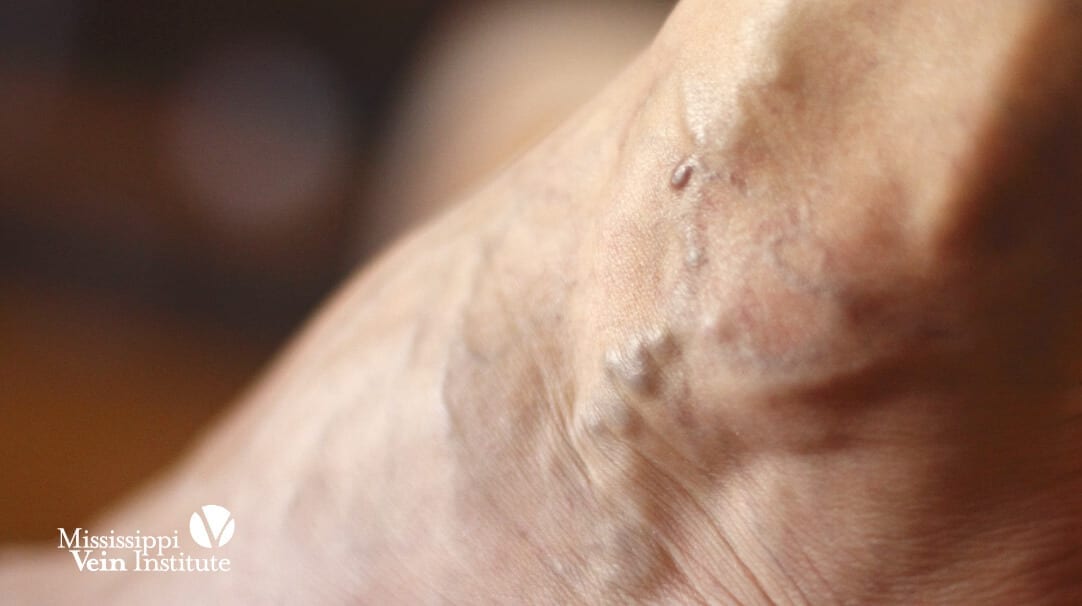Vein Disorder in Legs
Expert Specialists For All Your Vein Treatment Needs
Are you tired of always having to cover up your legs due to unsightly spider veins and varicose veins? You are not alone. 50% of American women and men suffer from some form of vein disorder. Each year over 1 million people undergo surgery for their vein problems.
Common Vein Disorders
Mississippi Vein Institute is an outpatient center that specializes exclusively in the diagnosis and minimally invasive treatment of venous disorders.
Mississippi Vein Institute was founded in July 2008 by Dr. Manning to create a center of excellence for the treatment of varicose veins, spider veins, and venous ulcerations.
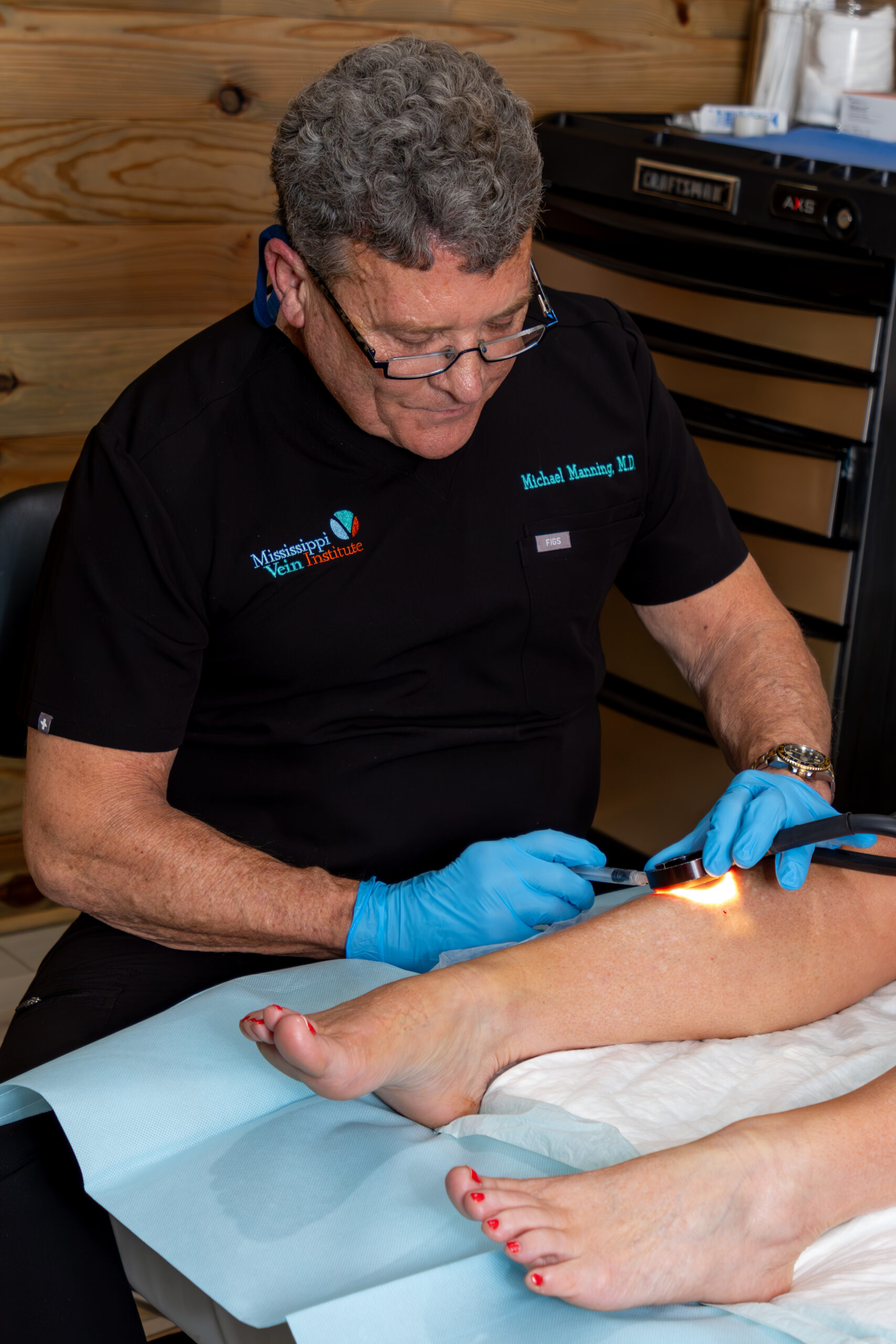
We have now performed over 20,000 endovenous laser procedures to treat varicose veins and venous ulcerations using the CoolTouch endovenous laser system.
That number of procedures places Mississippi Vein among the top vein clinics in the country and, as a result, CoolTouch has awarded Mississippi Vein a Center of Excellence designation.
Rediscover the legs you once knew.
Problematic leg veins cause physical symptoms but they also cause emotional symptoms as well. Whether it’s avoiding wearing shorts or skirts or missing a pool party or a beach trip, a person’s quality of life can be severely affected.
At Mississippi Vein Institute, Dr. Adams and myself specialize in the treatment of problematic leg veins using the most advanced techniques and technologies available. There is simply no reason to suffer the pain and embarrassment of problematic leg veins any longer.
Watch the Patient Orientation Video
3 COMMON DISORDERS & TREATMENTs
Venous insufficiency is a condition where the return of blood through the veins is impeded, causing blood to pool in the legs. Below are common vein disorders that we treat here at Mississippi Vein Disorders Clinic.
SPIDER VEINS
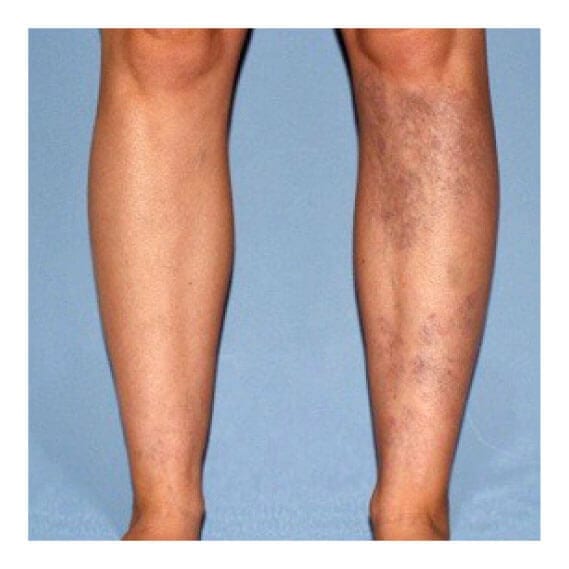
Sclerotherapy
We use foam sclerotherapy to clear spider veins. We are able to clear 60 to 70% of the existing spider vein burden with each session. Both legs are treated (front and back) during a sclerotherapy session.
VARICOSE VEINS
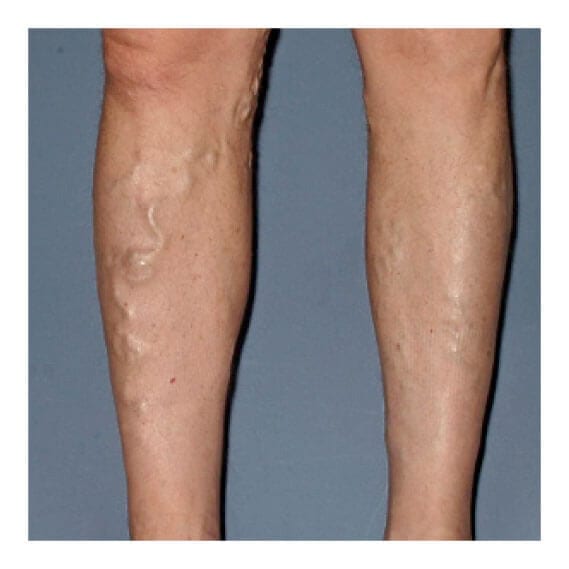
CoolTouch Laser System
We use the CoolTouch endovenous laser to treat the underlying cause of varicose veins. The varicose veins themselves are then removed through micro-incisions that leave little to no mark on the skin.
VENOUS ULCERS
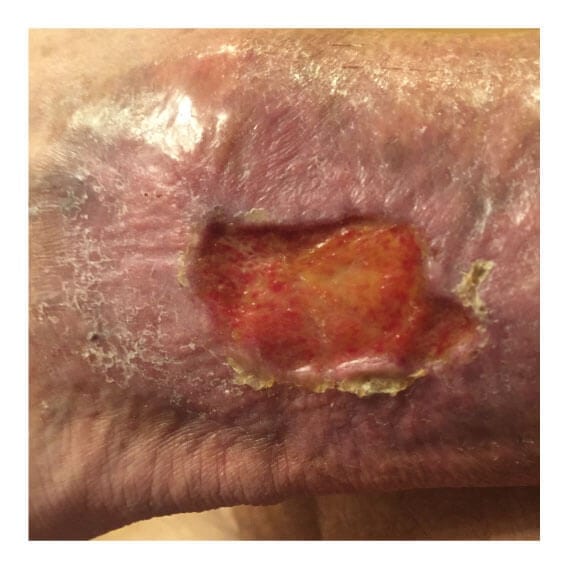
CoolTouch Laser System
We use the CoolTouch endovenous laser to treat the underlying cause of the ulceration. Most ulcers heal within 6 to 8 weeks of treatment.
Vein Disorder Treatment
in Madison & Jackson MS
See below to learn about we treat the most common vein issues.
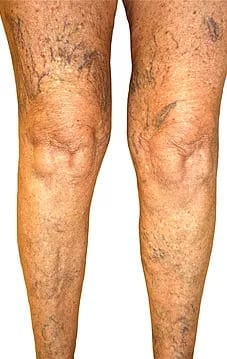
Are You a Candidate?
All new patients under go a lower extremity venous ultrasound to rule out venous reflux as the underlying cause of their complaints. Sclerotherapy for spider veins in the setting of significant underlying venous reflux will not be effective. Foam sclerotherapy is the gold standard for the treatment of spider veins. Most patients who have spider veins alone (without associated varicose veins) do not have underlying venous reflux and can be simply treated with sclerotherapy. But, an ultrasound exam is the only way to know for certain.
How Does Sclerotherapy Work?
Sclerotherapy works by causing an inflammatory reaction in the spider vein that eventually leads to fibrosis and closure of the vein. Do not be surprised when the injected veins actually look worse during the first few days after the sclerotherapy session. This is a result of the inflammatory reaction and is to be expected. You may also notice small areas of clot (dark blood) within the injected veins. This is not the type of blood clot that can be life threatening and it should resolve on its own with time. Should the clotted vein cause any discomfort, we will make a small pin prick in the skin overlying the clot and express it from the vein. The discomfort should then quickly resolve.
Some spider veins are more resistant to sclerotherapy than others. We will adjust the concentration (power) of the sclerotherapy agents depending on the success of the previous sclerotherapy session.
What Does the Procedure Involve?
The areas of concern are photographed. The sclerotherapy injections are done using a very small 30 guage needle. Most patients tolerate the injections fine but, for those who don’t, sedation is available. A driver is necessary if sedation is used. The area to be injected is cleaned thoroughly with alcohol. We use a piece of equipment called a Vein Light to guide our injections. The Vein Light allows us to see the larger reticular veins which are often feeding the spider vein clusters. Injections placed directly into these “feeder” veins, when present, are essential to effectively treat spider veins at the skin surface.
We use a combination of tetradecyl sulfate and glycerin as our primary sclerotherapy agent. The combination of the two agents is quite effective and results in much less pain upon injection when compared to other sclerotherapy agents. It is not unusual to experience a red whelp at the injection sites, much like a fire ant bite. The whelp usually lasts for a few hours and is not something to worry about. Bruising is also acommon occurence following a sclerotherapy session. The bruising typically clears in one to two weeks. We have Arnicare for purchase in the clinic which will help limit the amount of bruising.
The question most commonly asked is “How many sclerotherapy sessions will I need”. The answer depends on the severity of the spider veins. We are usually able to clear 60 to 70% of an existing spider vein burden with each treatment. Most patients undergo 2 to 3 sclerotherapy sessions spaced 1 month apart to get optimum results. The thing to realize is that each sclerotherapy session builds upon the results of the previous session. The spider veins that we successfully eliminate will not recur but mores pider veins may show up in a different area as the years go by. Most patients stop by every year or two for a maintenance sclerotherapy session to keep their legs in top shape.
Patients are fitted with thigh high compression hose that they wear for 5 days following the sclerothrapy session. We have the hose for purchase in our clinic or you may bring your own if you have them. Just make sure that they are thigh high grade 2 compression hose. Compression hose are an essential component of successful sclerotherapy. They dramatically increase the number of spider veins that can be cleared with each sclerotherapy session. They do this by compressing the walls of the spider veins together which helps them to sclerose and disappear. The hose may be removed to shower and sleep. If you are able to sleep in the hose, do so. The take home message is that more time in the compression hose is better when it comes to clearing as many of the spider veins as possible per session. Hot baths are discouraged for the first week after sclerotherapy injections. Soaking in a hot bath dilates the veins and makes it harder for the sclerosing agent to close the spider veins. Otherwise, resumption of normal activity is encouraged immediately following sclerotherapy.
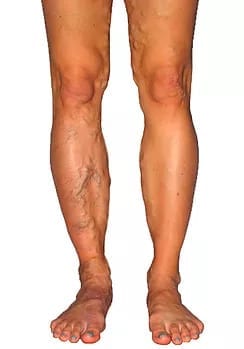
What are varicose veins?
Blood is carried away from the heart by arteries and back to the heart by veins. The heart pumps the blood downward to the feet but it is the contraction of the leg muscles that pumps the blood back upward to the heart. The primary leg muscle responsible for the pumping is the calf muscle. Each time the calf muscle contracts, blood is propelled upward through veins past one-way valves. The one-way valves prevent the flow of blood back into the legs in between muscular contractions. Varicose veins result when these one-way valves fail. The most common cause of varicose veins is an inherited disorder that affects the one-way valves.
Varicose Veins
Varicose veins are dilated veins that have been enlarged by exposure to abnormally high venous pressure. The high pressure is most commonly due to a malfunction in the great saphenous vein which runs from the groin to the ankle along the inside of the leg. The great saphenous contains several one way valves that promote the return of blood back to the heart. Valve failure within the great saphenous vein diminishes blood flow out of the leg which leads to venous congestion and increased pressure within the great saphenous vein. The increased pressure is transmitted into the branches of the great saphenous vein and varicose veins are the eventual result.manifestation of the problem.
The valve disorder within the great saphenous vein is most commonly an inherited condition. If one parent has varicose veins, the chance you will have them is about 50%. If both parents have varicose veins, the chance you will have them approaches 100%. Varicose vein disease is a medical condition that commonly causes symptoms that include leg pain and swelling, leg cramps, and restless legs. The leg pain is typically worsened with prolonged sitting and standing and improved with movement and leg elevation.
The most important thing to realize about varicose vein disease is that the varicose veins seen at the skin surface are a manifestation of an abnormality in a vein that can’t be seen (most commonly the great saphenous vein). An ultrasound exam is needed to identify the underlying source of the varicose veins. If varicose veins are simply removed without treating their underlying source, they will recur.
The most conservative option used to treat varicose veins is compression hose. Compression hose work by speeding the flow of blood out of the legs which relieves the venous congestion and thereby improves the associated symptoms. Compression hose relieve symptoms associated with varicose veins but they are difficult to remain compliant with and they do not address the underlying problem at its source. The most comprehensive and effective approach to treat varicose veins involves the destruction of their underlying source using laser energy (endovenous laser ablation) followed by the removal of the varicose veins at the skin surface through micro incisions (micro-phlebectomy).
What are the Symptoms?
Lower extremity venous insufficiency (valve failure) is progressive if not treated effectively. The symptoms can progress from pain and swelling to skin discoloration and skin ulceration. Leg cramps are a common occurence in the setting of varicose veins. Once the venous pressure in the leg rises high enough, a muscle cramp will ensue to help force the blood up and out of the leg. Restless Leg Syndrome is also a common symptom of lower extremity vein disease.
What does the procedure involve?
Patients are mildly sedated therefore, they must have a driver with them. Upon arrival for the procedure, photographs are taken, the course of any varicose veins are marked on the skin, and an intravenous catheter is placed for the administration of versed (sedative). Supplemental oxygen is administered and monitors for blood pressure, EKG, and pulse oximetry are applied. The leg to be treated is prepped with hibiclens and sterile draped. The access point for the introduction of the laser is identified using ultrasound guidance. The laser fiber is small, about the size of a strand of spaghetti.
The laser fiber is precisely positioned within the target vein using ultrasound guidance. 400 to 500 cc of tumescent anesthesia is then carefully placed circumferentially around the vein using ultrasound guidance. The tumescent anesthesia prevents any sensation of pain while the laser is firing and its presence around the vein prevents the heat of the laser from being transmitted to the skin, muscles, or nerves. The art of the procedure lies in the placement of the tumescent anesthesia. It is the most critical step.
Once the tumescent anesthesia is in place, the proper position of the laser fiber is re-checked and the laser firing is initiated at a pullback speed of .5 to 1 mm/sec. A typical laser run takes about 10 minutes. There is no sensation while the laser is firing. Patients are comfortably sedated throughout the entire procedure. The vein that is treated with the laser is the underlying cause of the varicose veins that are seen at the skin surface. The vein that is treated with the laser is not removed, the body simply absorbs the ablated vein over time. Micro-phlebectomy (the removal of existing varicose veins thru micro-incisions) is then performed on any large and ropey varicose veins seen at the skin surface. The incisions are very, very small and leave little to no mark on the skin. No stitches are required. Sclerotherapy is then done to clear any associated spider veins. It is the combination of all three therapies (endovenous laser ablation to treat the underlying cause of the varicose veins, micro-phlebectomy to remove the existing varicose veins at the skin surface, and sclerotherapy to clear associated spider veins) done simultaneously in a single treatment session that is responsible for our fantastic results. The treated leg is then wrapped with an ace bandage for 2 days followed by a compression hose for 1 week. The hose may be removed to shower and sleep. Any post-procedure pain is easily managed with Motrin or Alleve. Daily activities may be resumed on the second day. Exercise may be resumed on the third day. Patients are able to return to work on the second or third day.
Some temporary skin numbness above the course of the vein treated with the laser is a common occurence. It is not a big deal and typically totally resolves with time. A “pulling” sensation along the course of the vein treated with the laser is also common. The sensation is usually felt 1 week after the procedure. The “pulling” sensation is due to the healing process and typically resolves in 2-3 weeks. Follow-up ultrasounds are done at 2 weeks and 3 months to ensure the vein treated with the laser remains closed. The chance of varicose vein recurrence following the combination of endovenous laser ablation and micro-phlebectomy is less that 1%.
Are There Any Potential Complications?
Complications are very rare. The one potential complication to be acutely aware of is the formation of a deep venous clot. The complication is very, very rare following endovenous laser ablation (<1% nationally, <.07% in our clinic) and is almost completely prevented by walking (resumption of normal activities) and compliance with wearing the ace wrap and compression hose as directed. The thing to look out for is a firey red, hot, and painful leg. If this occurs, call Dr. Manning or Dr. Adams on their cell phone immediately and they will handle the problem. Again, this complication is extremely rare following endovenous laser ablation but it is a potentially dangerous occurrence so it is important for each patient to know how to recognize it. A more common occurence is for the patient to notice some skin numbness along the course of the laser run. The numbness typically totally resolves within 1 to 2 months.
Most patients with varicose veins also have spider veins which are small unsightly veins located just beneath the skin. These are most effectively cleared using foam sclerotherapy which involves the injection of a substance that destroys the spider veins. We have been able to get fantastic results by performing endovenous laser ablation, micro-phlebectomy, and sclerotherapy all at one sitting. The final results have been truly life changing for our patients.
Problematic leg veins cause physical symptoms but they also cause emotional symptoms as well. Whether it’s avoiding wearing shorts or skirts or missing a pool party or a beach trip, a person’s quality of life can be severely affected. At Mississippi Vein Institute, Dr. Adams and myself specialize in the treatment of problematic leg veins using the most advanced techniques and technologies available. There is simply no reason to suffer the pain and embarrassment of problematic leg veins any longer.
